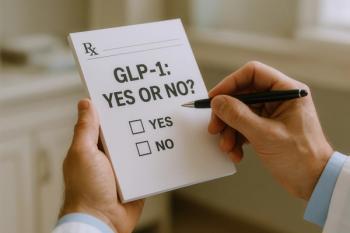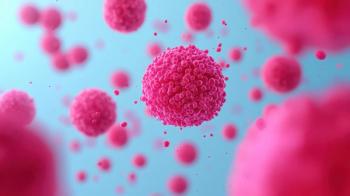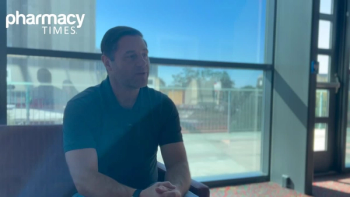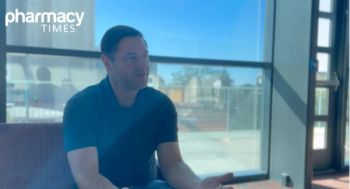
Triggering a Tumor Antiviral Immune Response in Patients With Triple-Negative Breast Cancer
Key Takeaways
- Mis-spliced RNA in TNBC cells mimics RNA viruses, activating antiviral immune pathways and inducing tumor cell apoptosis.
- RNA splicing deregulation in tumors leads to hypersensitivity to spliceosome-targeted therapies, particularly in TNBC.
During a study investigating therapeutics that target how RNA splicing activates antiviral immune pathways in triple-negative breast cancers, researchers observed that endogenous RNA in tumor cells that had been mis-spliced is able to mimic an RNA virus.
During a study investigating therapeutics that target how RNA splicing activates antiviral immune pathways in triple-negative breast cancers (TNBC), researchers observed that endogenous RNA in tumor cells that had been mis-spliced is able to mimic an RNA virus. This process then results in the self-destruction of tumor cells in order to further fight against infection.
These findings may allow researchers to advance new avenues for activating the immune system in cancers like TNBC, leading to improved treatment outcomes, according to the study authors.
"We know therapeutics that partially interfere with RNA splicing can have a very strong impact on tumor growth and progression, but the mechanisms of tumor killing are largely unknown. In this study, we discovered that these therapeutics are modulators of anti-tumor immunity," said study co-author Trey Westbrook, PhD, a McNair scholar in cancer research, professor and Welch chair in chemistry, and co-director of Therapeutic Innovation Center at Baylor College of Medicine (THINC@BCM), in a press release.
The process of RNA splicing, which requires the removal of non-coding introns, is generally deregulated in tumors, resulting in both tumor growth and hypersensitivity to spliceosome-targeted therapies (STTs). Additionally, prior research has shown that TNBC is one of the most responsive cancers to STTs.
When investigating how STTs obstruct tumor progression, the researchers observed that STTs are able to interfere with RNA splicing in TNBC cells, resulting in the development of a grouping of endogenous mis-spliced intron RNA in the cytoplasm of the tumor cell.
Some of these aberrant RNAs then go on to make double-stranded structures that mimic an RNA virus. These structures are then recognized by antiviral immune pathways, causing apoptosis and the release of signals to the immune system that activate the body’s inflammatory response.
"Our study highlights an unanticipated way to activate an inflammatory response through specifically targeting cancer cells. These findings emphasize that when we think about the activity of cancer therapeutics, we need to look both at how they impact cancer cells as well as the effect this might have on the immune system," said Elizabeth Bowling, co-first author and member of the THINC@BCM lab, in the press release.
Additionally, the researchers noted that they now have a clearer understanding of how higher levels of mis-splicing can result in cellular stress for patients with TNBC.
"We suspect this RNA splicing stress may be present in many cancer types and disease states," said Jarey Wang, PhD, co-first author, member of the THINC@BCM lab and graduate of the Baylor Medical Scientist Training Program, in the press release.
Such findings may also allow researchers to discover new biomarkers that will help them select patients for treatment based on how the patients will respond to current immune-modulating therapies. Furthermore, the results demonstrate that a tumor cell's endogenous mis-spliced RNA may potentially activate an immune response without STT, as data have indicated that there is a correlation between mis-spliced RNA and immune signatures, even for those tumors that are generally immune-cold.
The researchers noted that their current hypothesis is that this endogenous mis-spliced RNA may allow them to discover which cancers are the most responsive to immunotherapy. However, they noted that further research would be required to confirm whether the activation of STTs of anti-tumor immune pathways would allow more patients to be eligible for immunotherapy.
"While immunotherapy is having profound effects for some cancer patients, it still only works in a minority of cancer patients. It's imperative that we learn how to broaden the swath of patients who might benefit from immunotherapy," Westbrook said in the press release. “This discovery uncovers a new mechanism by which cancers are speaking to the immune system and gives us strategies to exploit that for the benefit of patients.”
REFERENCE
Triggering tumor antiviral immune response in triple negative breast cancer. Houston, TX: Baylor College of Medicine; January 14, 2021.
Newsletter
Stay informed on drug updates, treatment guidelines, and pharmacy practice trends—subscribe to Pharmacy Times for weekly clinical insights.





















































































































































































































